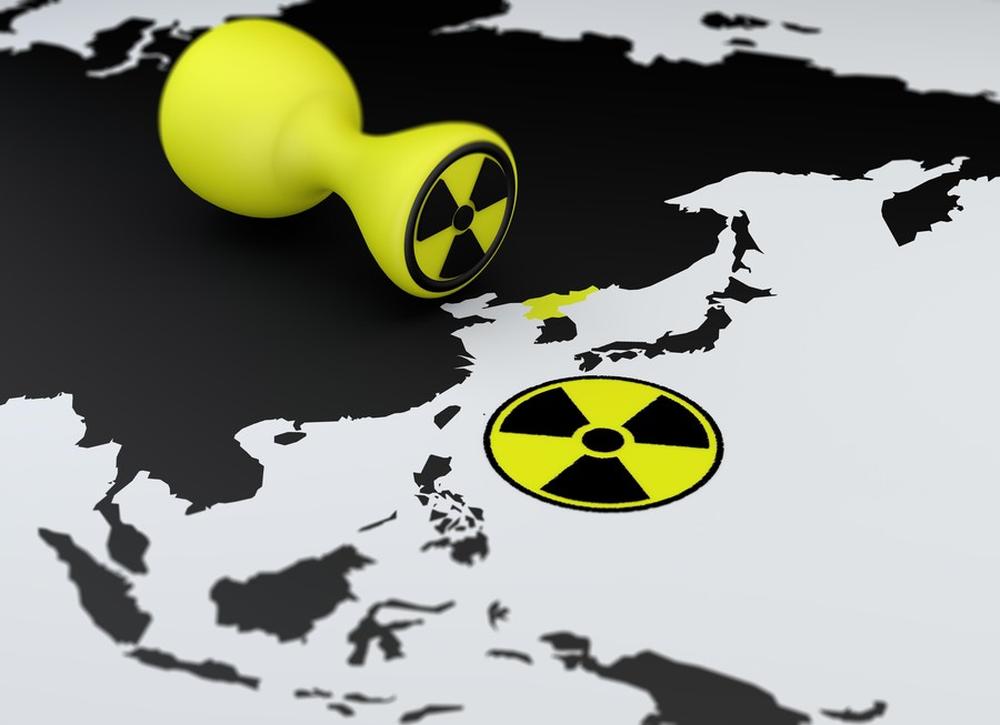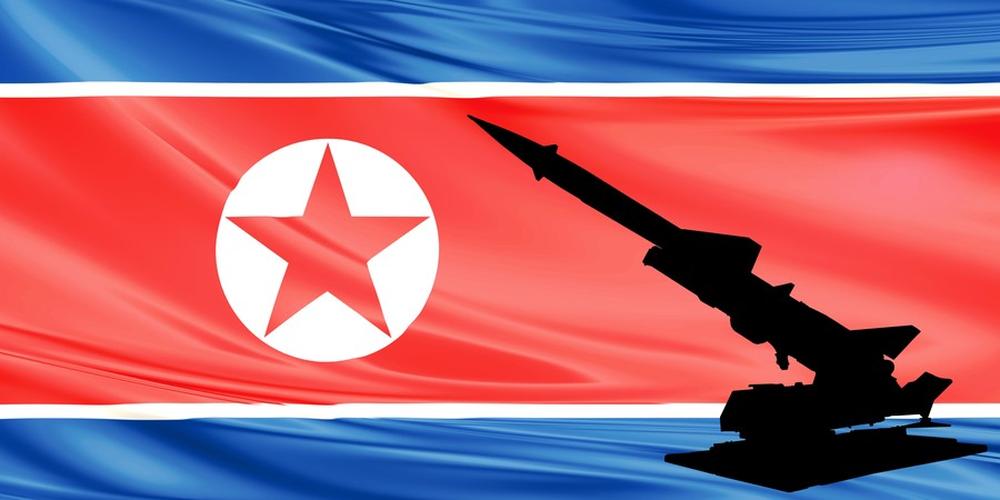- #North Korea
- #Nuclear & Missile Issues
- #Sanctions & Human Rights
- #US Foreign Policy

► The restarting of the Yongbyon facility is part of a mid-to-long term strategy by Kim Jong-un to manage security threats and advance nuclear technologies.
► Such recent events may potentially harm negotiations with the U.S. and signal long-term confrontations to come in the future.
According to the International Atomic Energy Agency (IAEA) report, “Application of Safeguards in the Democratic People’s Republic of Korea,” submitted to the IAEA Board of Governors by the Director General, North Korea appears to have restarted its Yongbyon nuclear facility since early July. The report confirmed that the 5-megawatt nuclear reactor had remained inactive between December 2018 and January 2021. However, “there have been indications, including the discharge of cooling water, consistent with the operation” since early July. Additionally, there were indications that Yongbyon’s radiochemical laboratory had been in operation for five months from mid-February to mid-July, much longer than the time it took for facility maintenance in the past. The five-month operation time is equal to the time it takes for a 5-megawatt reactor to reprocess spent fuel. It is also the same as when North Korea announced in 2003, 2005, and 2009 that it had begun reprocessing activities. Further indications that the Pyongsan Uranium Mine and Concentration Plant has been in operation appears to confirm that the Yongbyon nuclear facility has in fact been restarted.
The restarting of the Yongbyon facility is a clear violation of UNSC resolutions. It appears that this is an effort to put into motion what Kim Jong-un had mentioned in his report during the 8th Party Congress in January. In the report, Kim demanded that North Korea continue to strengthen its nuclear forces without delay. He also said that North Korea must deter, regulate, and manage potential military threats by “further advancing nuclear technologies, including miniaturization and tacticalization of nuclear weapons, that can be applied in different means in the modern war depending on the purpose of operational missions and targets, and continue to push ahead with the production of super-large nuclear warheads.” Interestingly, the report also contains plans to develop a nuclear power industry, in earnest, to provide the country with a mid-to-long term strategy on energy supply. Kim’s report emphasized the importance of continuing its nuclear activities, both from a military and energy supply perspectives.
Given the IAEA’s claim that it has not been able to implement any nuclear safeguards in North Korea since March 2009 following the suspension of Six-Party Talks, North Korea’s recent restarting of its Yongbyon nuclear facility has great implications. In April 2013, North Korea announced that it will restart its Yongbyon uranium enrichment facility and 5-megawatt power plant. In September 2015, it declared that all of the Yongbyon facilities were fully operational. Following these announcements, North Korea conducted its 4th, 5th, and 6th nuclear tests between 2016 and 2017, making leaps in terms of its nuclear technologies and capabilities. As such, the recent restarting of Yongbyon could prove to be an important turning point for the North Korean nuclear issue.
North Korea has used the Yongbyon nuclear facility as a way to obtain nuclear materials and also as part of its aggressive nuclear diplomacy. During the first North Korean nuclear crisis in 1994, when North Korea and the IAEA faced issues over inspection, the most critical decision by North Korea was to reprocess spent fuel at the Yongbyon facility. In January of 2003, when North Korea withdrew from the Nuclear Non-Proliferation Treaty (NPT) as a result of US-DPRK conflict over the uranium enrichment program, its first course of action was to restart the reprocessing of nuclear spent fuel in Yongbyon. This allowed North Korea to produce enough plutonium to conduct nuclear tests starting in 2005 and an opportunity to destabilize the political environment on and around the Korean Peninsula. For this reason, this recent turn of events has caused concerns within the international community.
North Korea’s restarting of its nuclear activities may negatively influence US-DPRK negotiations in the coming months. Since the breakdown of the February 2019 US-DPRK summit meeting in Hanoi, the two sides have criticized each other and have failed to return to the negotiating table. The restarting of Yongbyon has added more uncertainty to the prospect of future negotiations. President Biden has declared that his North Korea policy will be based on previous inter-Korean and US-DPRK agreements, including the 2018 Panmunjeom Declaration, which came out of the 2018 inter-Korean summit, as well as the Singapore Joint Declaration. Following a review of its North Korea policy, the Biden administration has described its North Korea policy as a “calibrated and practical approach”—different from Trump’s summit diplomacy and Obama’s strategic patience. However, given the lack of details of this approach, including specific agenda as well as the conditions in which negotiations will take place, there are concerns about just how “calibrated” the Biden administration’s approach will be. At this moment, Biden appears unlikely to undertake a change in policy unless North Korea makes the first move. However, it remains unclear if North Korea will find itself to engage with Biden. Since December 2019, North Korea has suspended its negotiations with the United States, announcing that it will pursue a strategy of "head-on breakthrough." So far, Biden’s approach has not been enough to entice North Korea to return to negotiations.
With US-DPRK negotiations deadlocked, North Korea seems to be raising tensions via its Yongbyon nuclear facility. As mentioned earlier, North Korea announced during the 5th Plenary Meeting of the 7th Central Committee of the Workers' Party of Korea in December 2019 and the 8th Party Congress in January 2021 that it will deal with the United States through a “head-on breakthrough.” While it will not create a crisis in the short-term, it will certainly prepare for a long-term confrontation with the United States by raising tensions. We have to pay special attention to whether the recent restarting of Yongbyon could be the start of this process. North Korea has insisted that the United States policy towards North Korea and intentions will never change regardless of administrations. So far, it has not expressed any expectations about dealing with the Biden administration. As the diplomatic deadlock continues, the restarting of the Yongbyon facility could push the North Korean nuclear problem towards a more arduous march.
To a certain extent, North Korea’s domestic political and economic situations are expected to impact the North Korea nuclear problem. There are serious concerns that the restarting of Yongbyon could be the starting point. North Korea is currently experiencing grave domestic difficulties caused by the international sanctions regime, shutdown of its borders to deal with COVID-19, and natural disasters including tornadoes and floods. In the recent Voluntary National Review (VNR) submitted to the United Nations, North Korea admitted that it was experiencing difficulties with cereal productions as well as medical supplies including COVID-19 vaccines. During the 8th Party Congress, Kim Jong-un even admitted that the 5-year economic development plan had failed. Even though North Korea insists on no confirmed COVID-19 cases, it is pulling all resources to prevent the spread of the pandemic. If Korea’s domestic difficulties persist, it is possible that North Korea could be forced to engage in an aggressive foreign policy aimed at garnering attention from the international community. If the current predicament continues, its decision to restart the Yongbyon facility could lead to other provocative measures. North Korea is unlikely to make dramatic shifts in terms of its policies. However, if Biden’s version of strategic patience persists, it could force North Korea to take a prolonged approach vis-à-vis the United States and to make implement various measures to deal with its domestic difficulties. It is for these reasons that we must pay attention to the restarting of the Yongbyon nuclear facility.
Dr. Jihwan HWANG is Professor of International Relations at the University of Seoul, Korea. He was visiting scholar at the Catholic University of America and also taught inter-Korean relations at the George Washington University. He has served as several advisory positions in the Korean government, including Presidential Commission on Policy Planning, Ministry of Foreign Affairs, and Ministry of Unification. His publications include "The Paradox of South Korea's Unification Diplomacy," "The Two Koreas after U.S. Unipolarity," "the Political Implications of American Military Policy in Korea," etc. He is a graduate of Seoul National University and received his Ph.D. in Political Science from the University of Colorado, Boulder.


